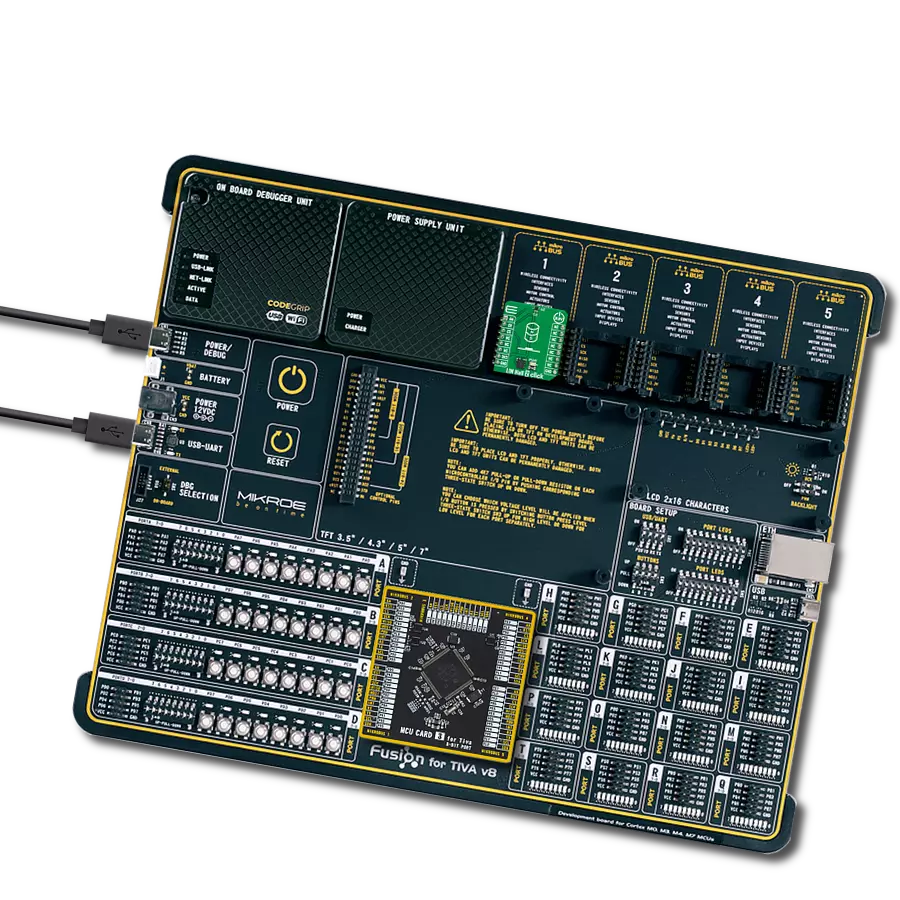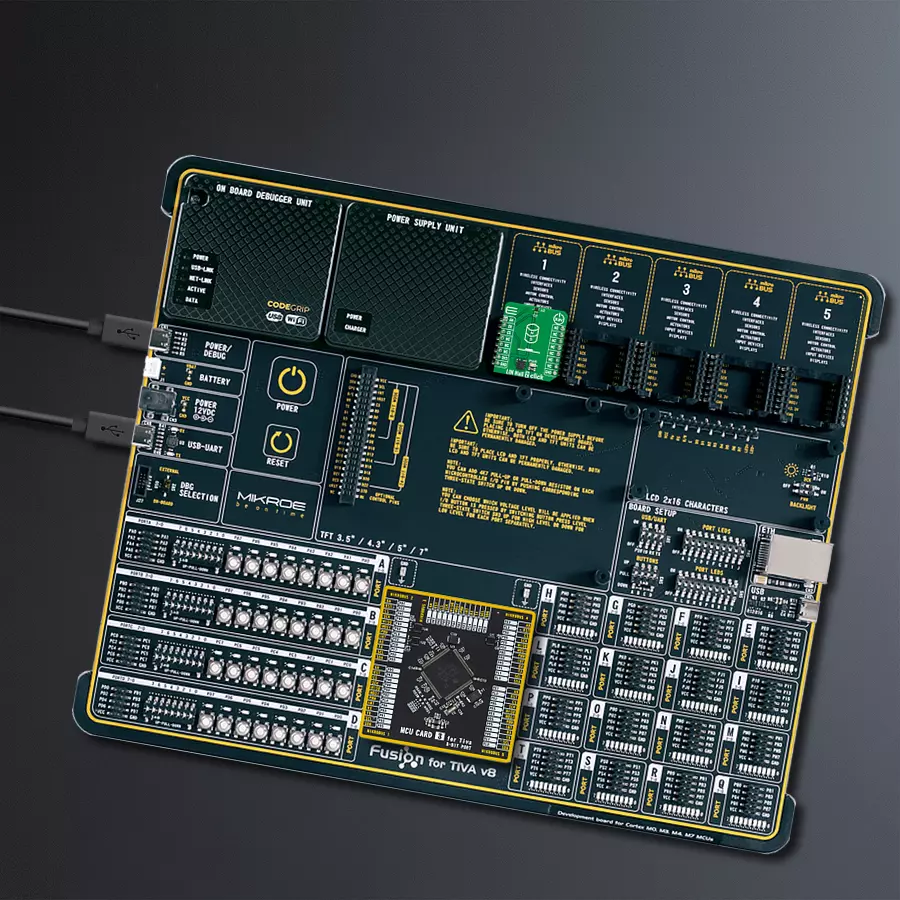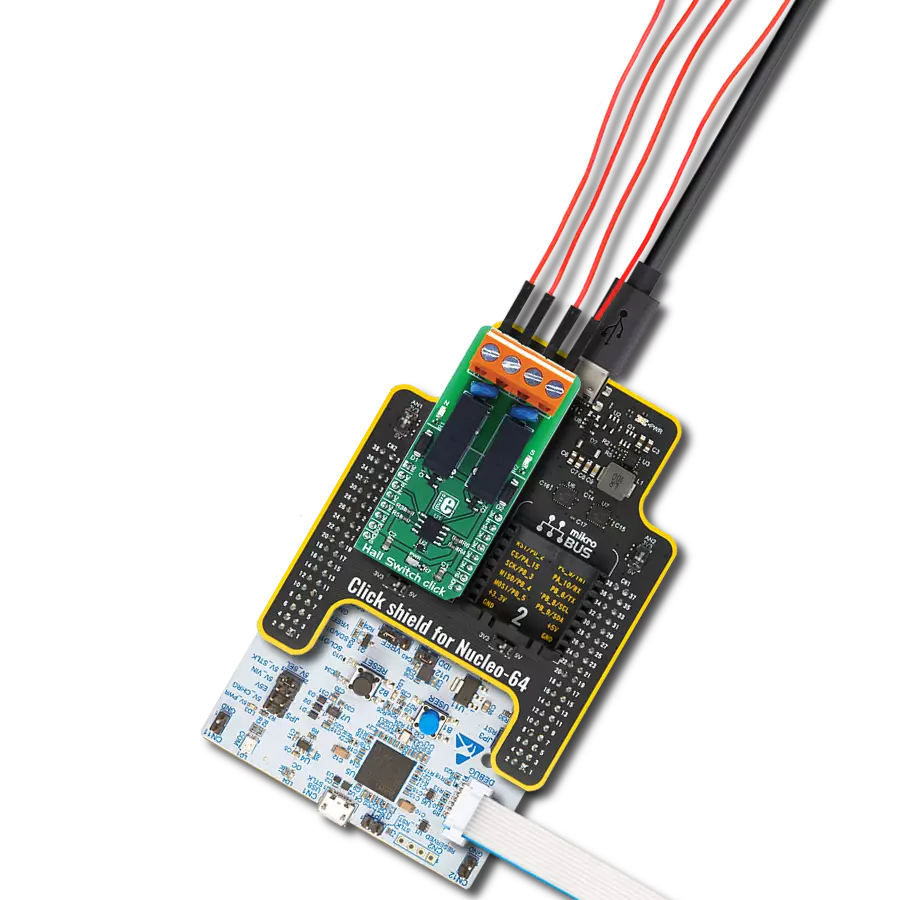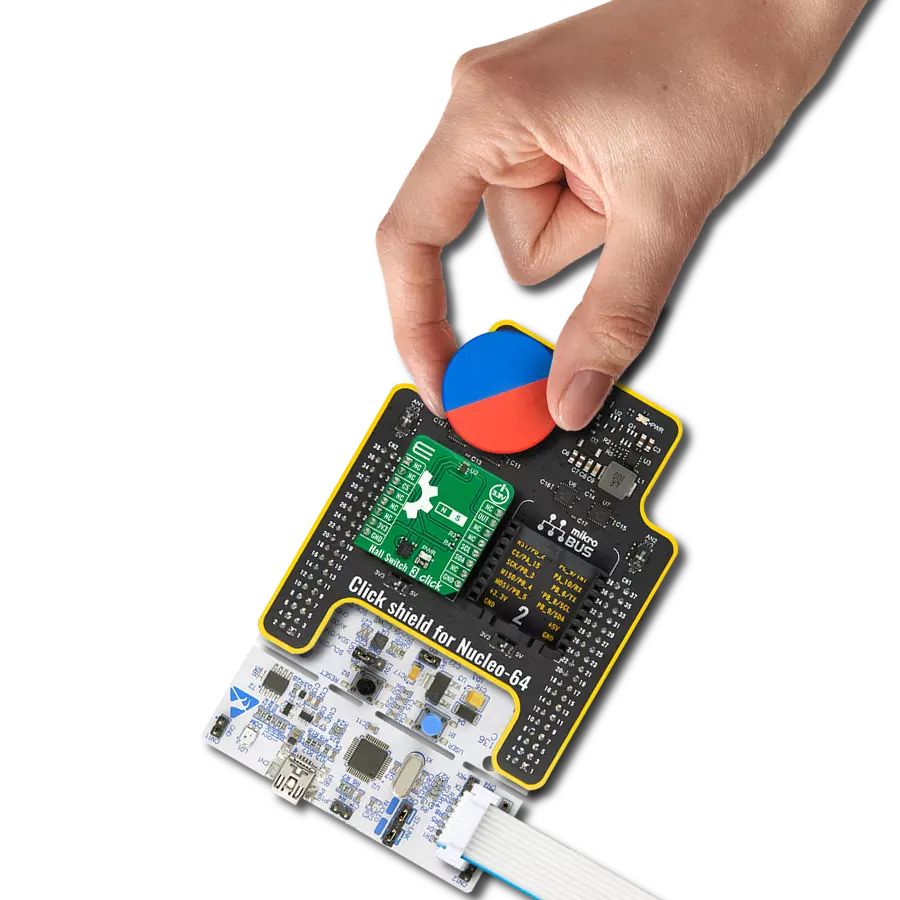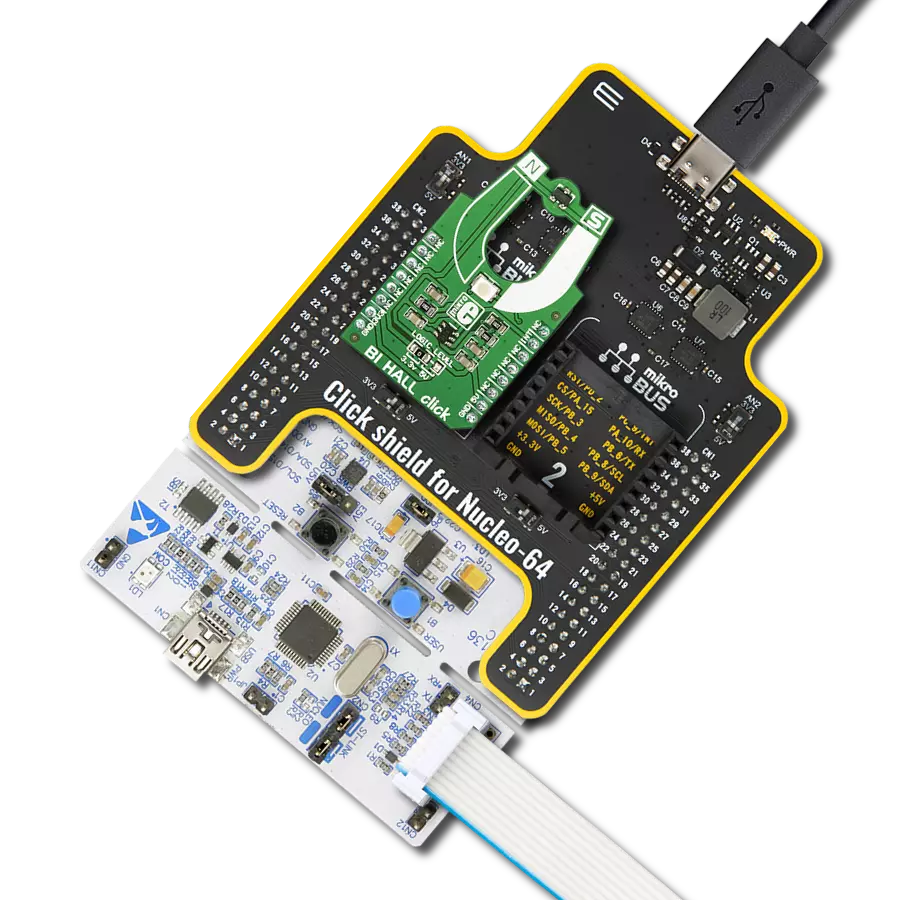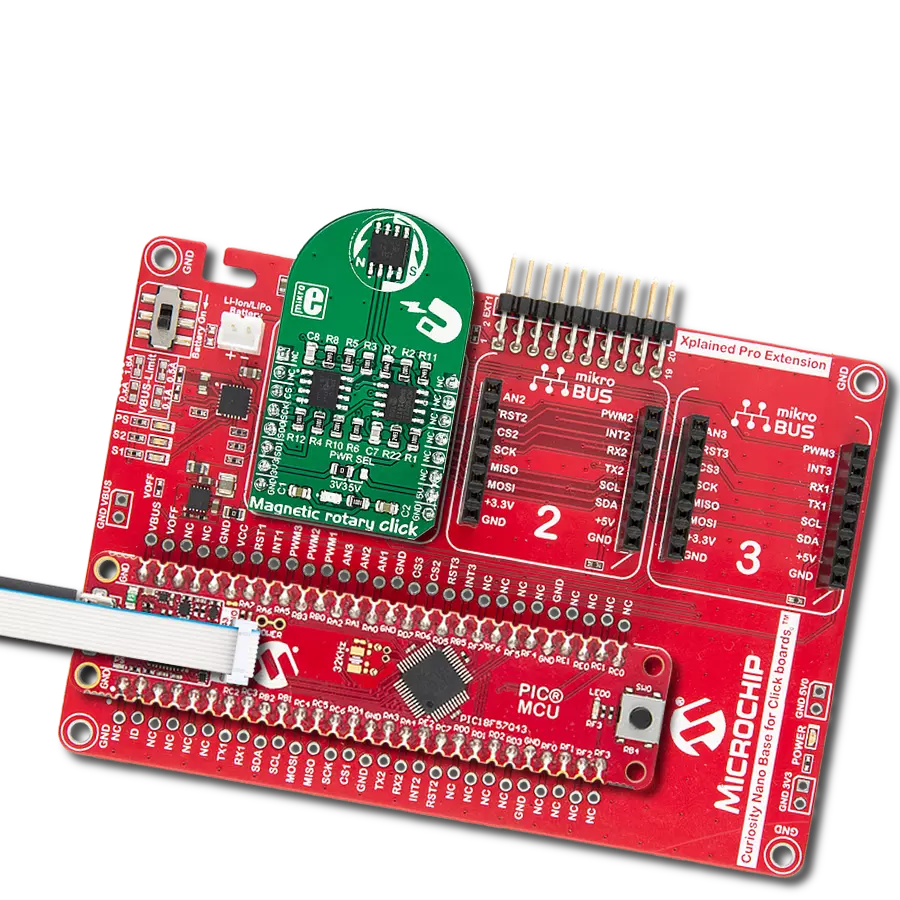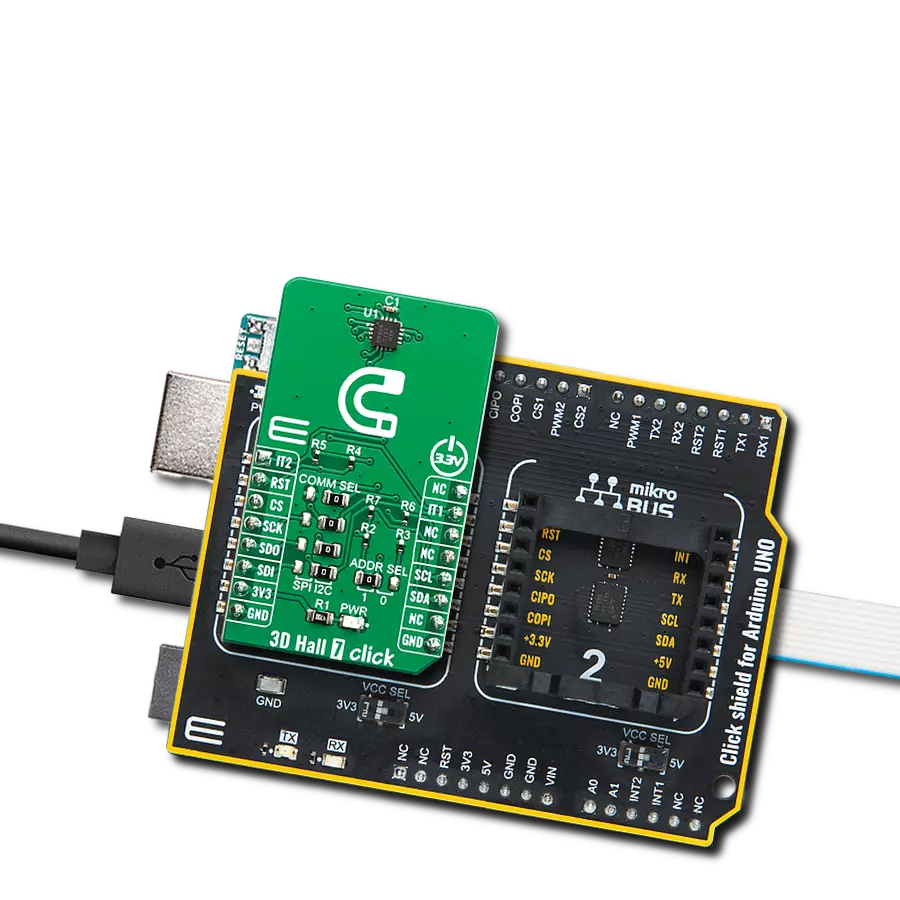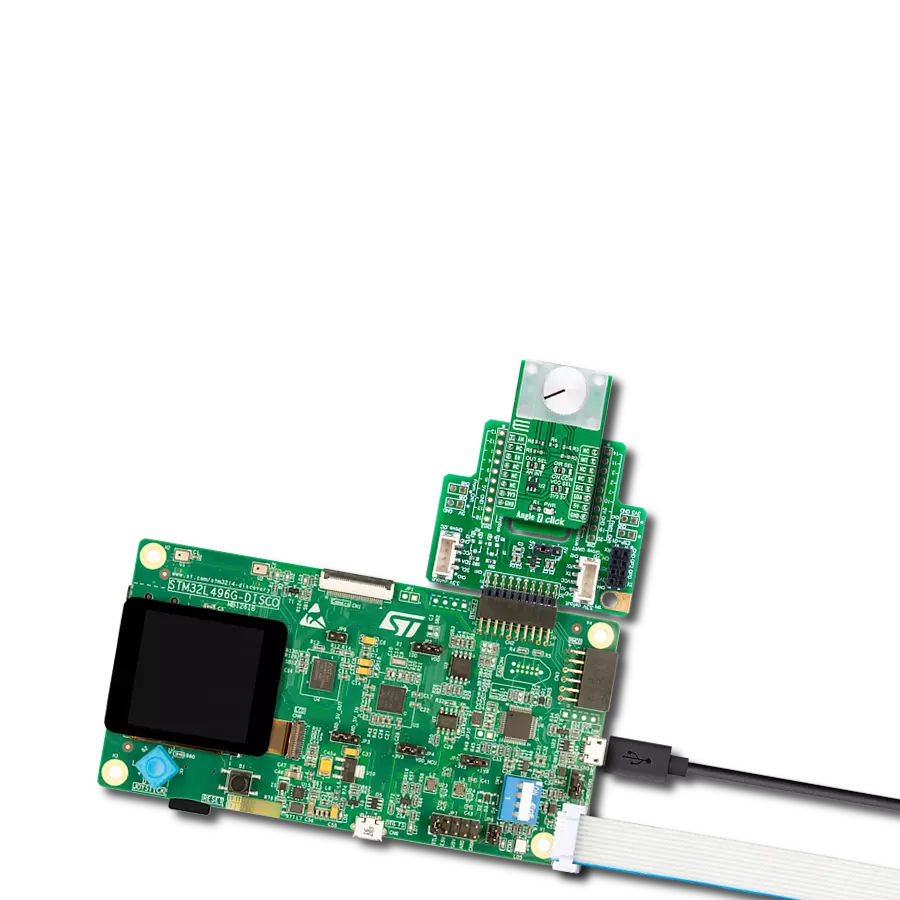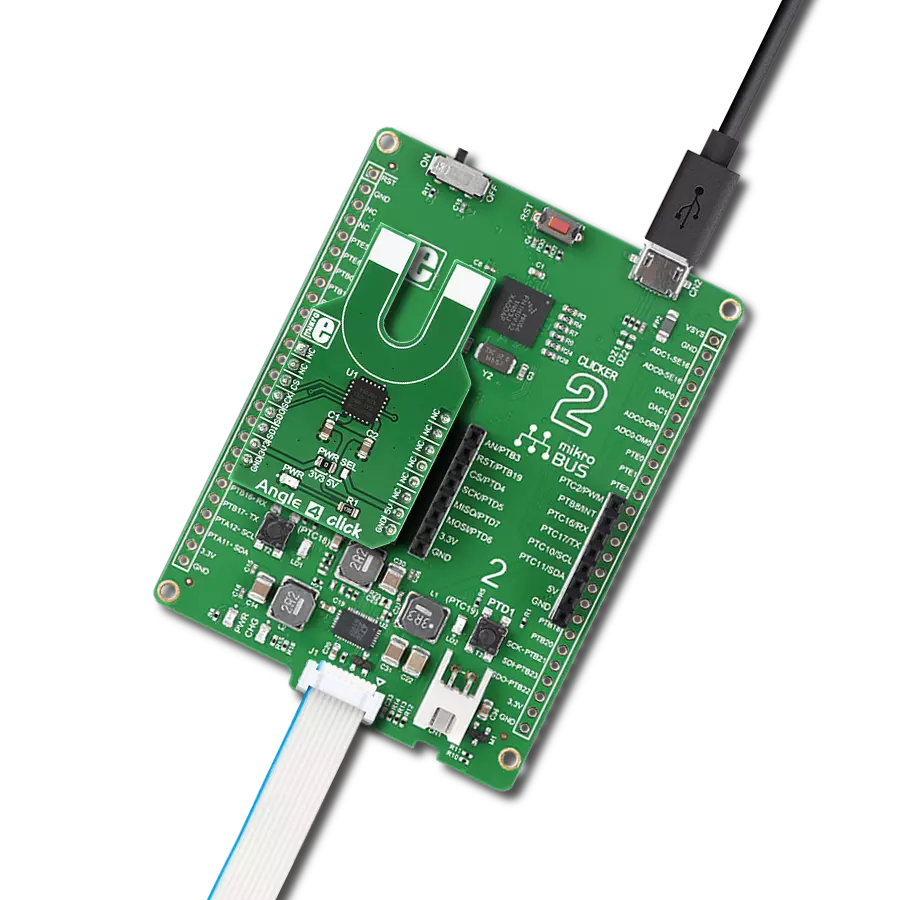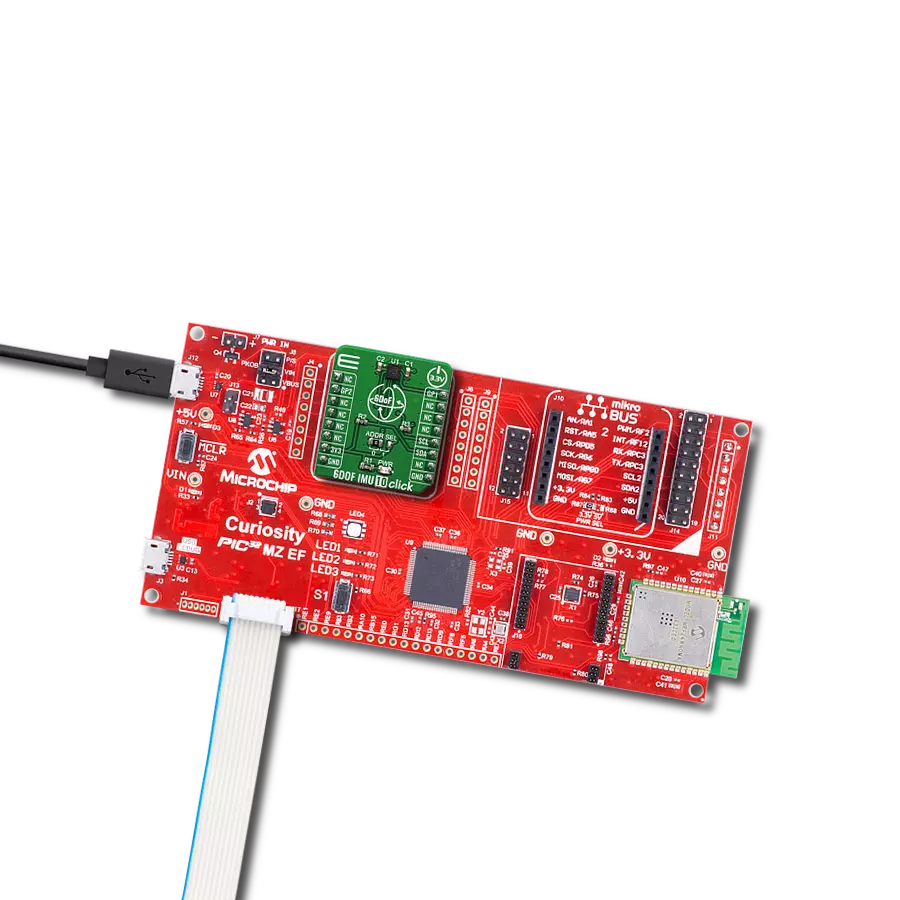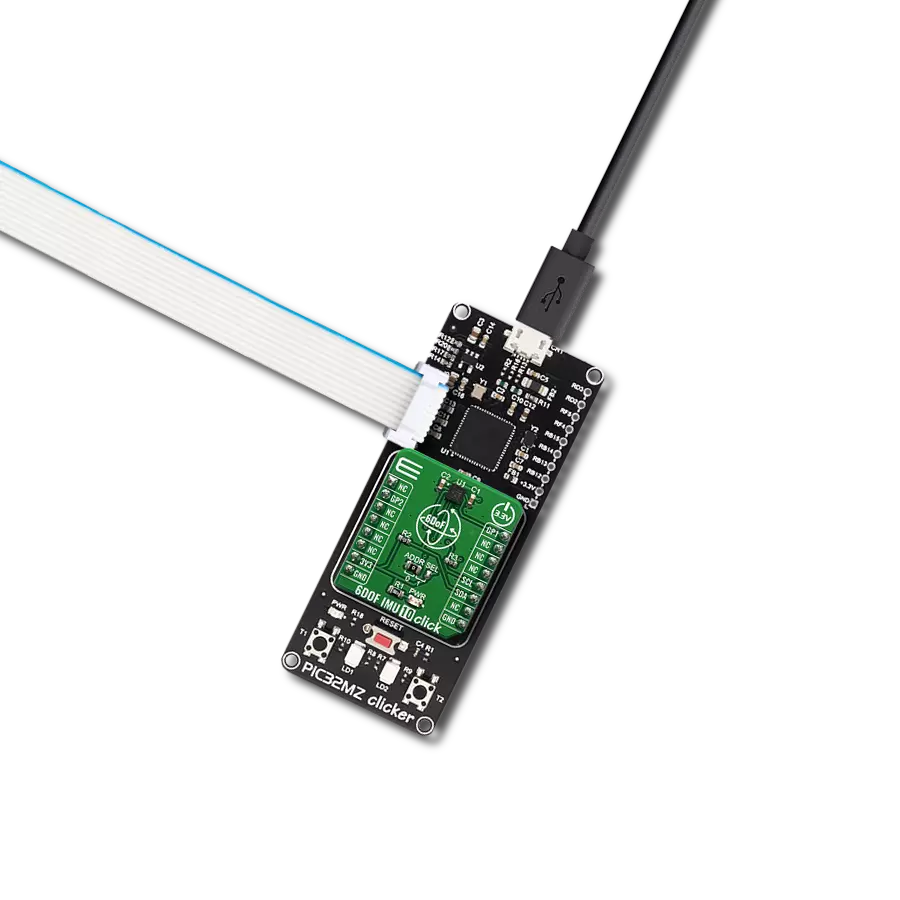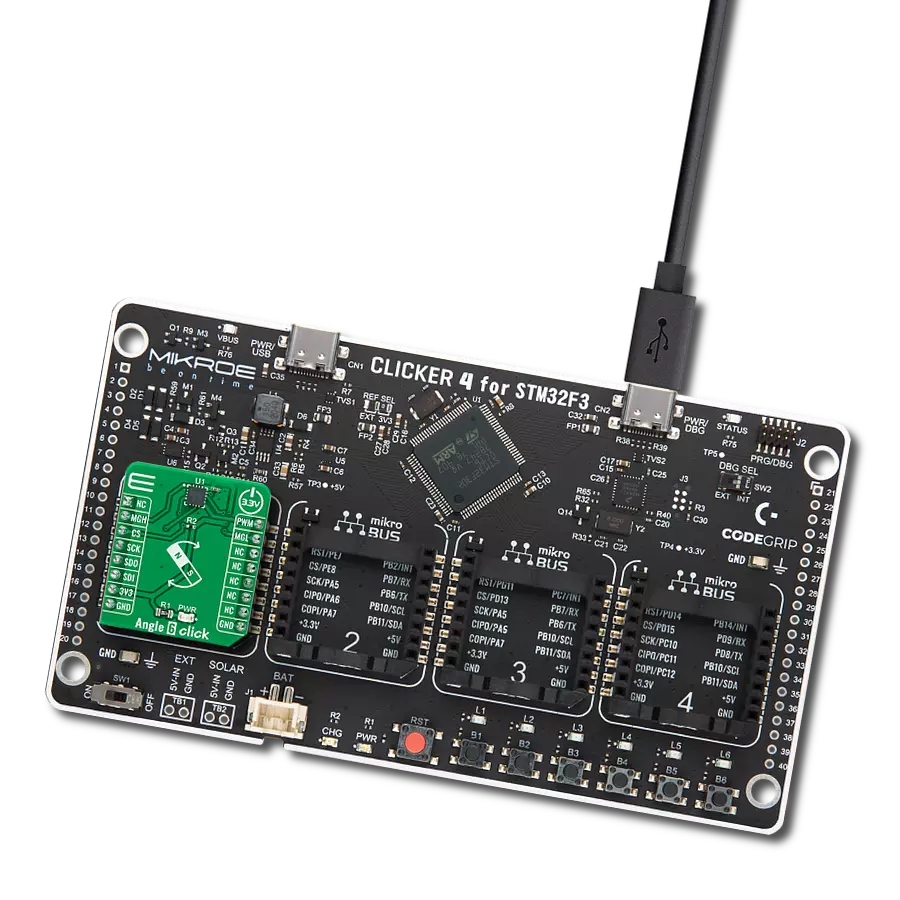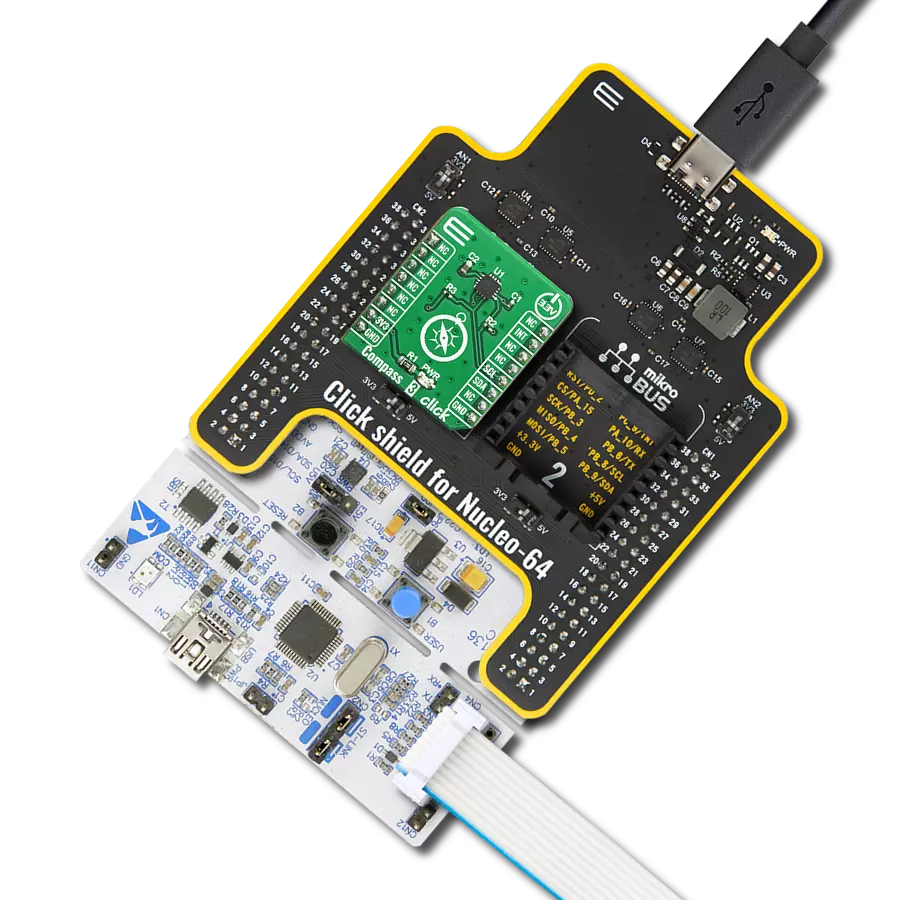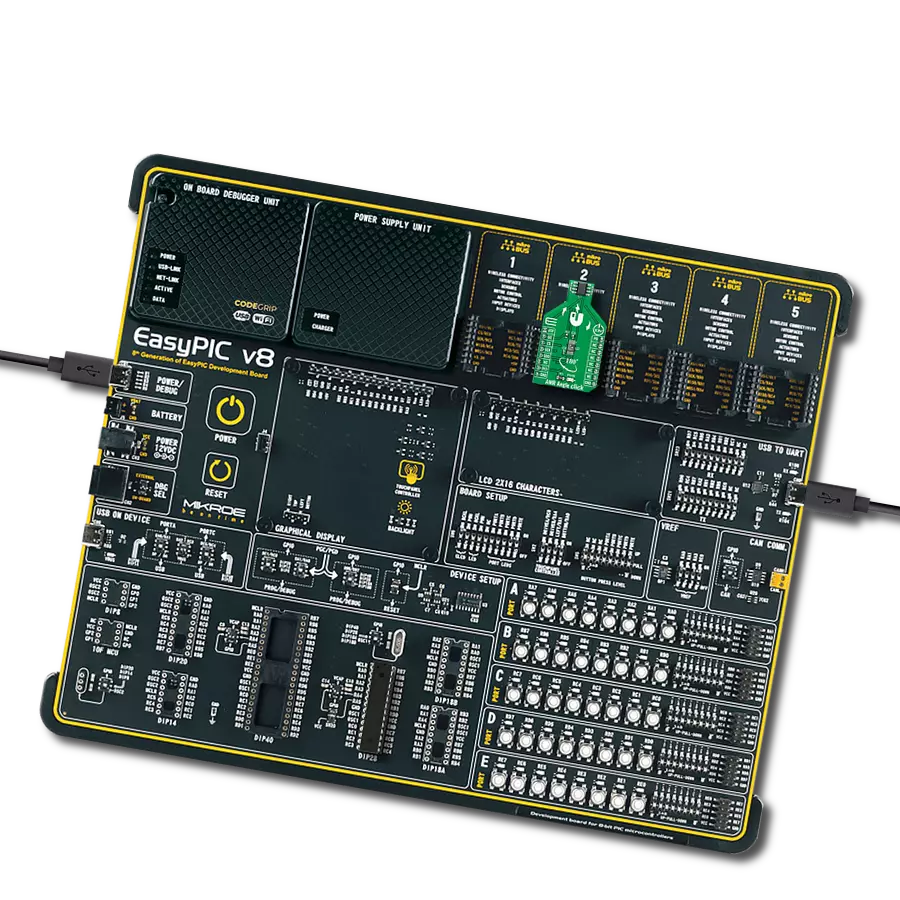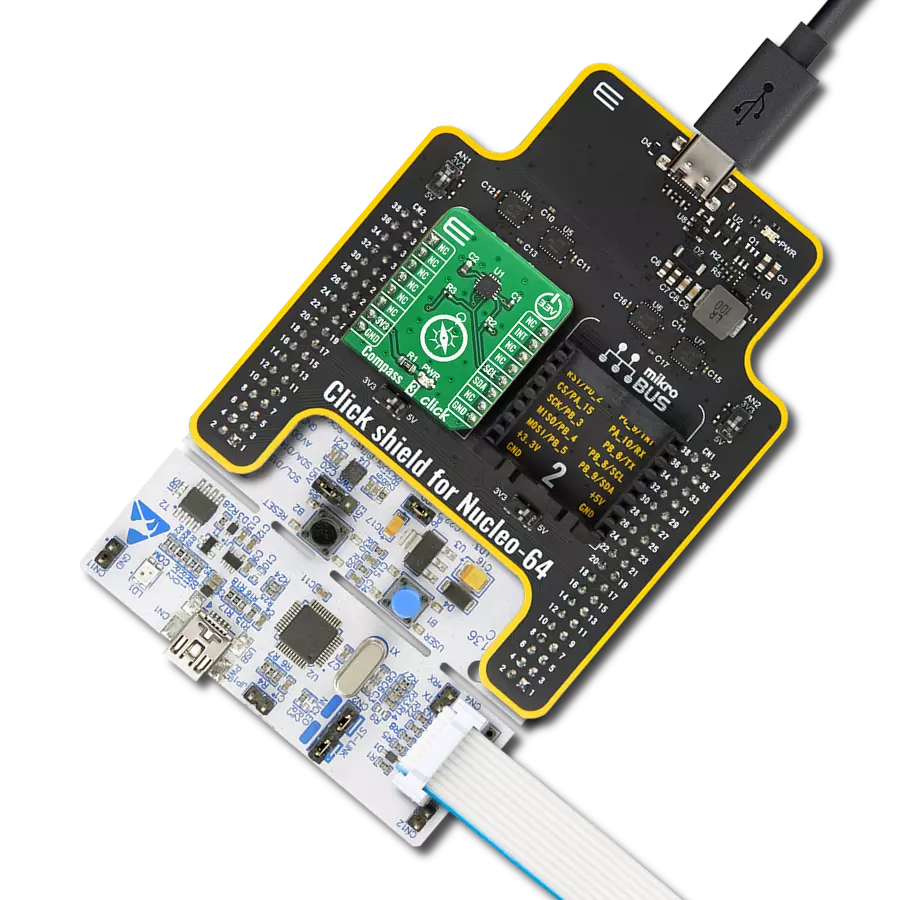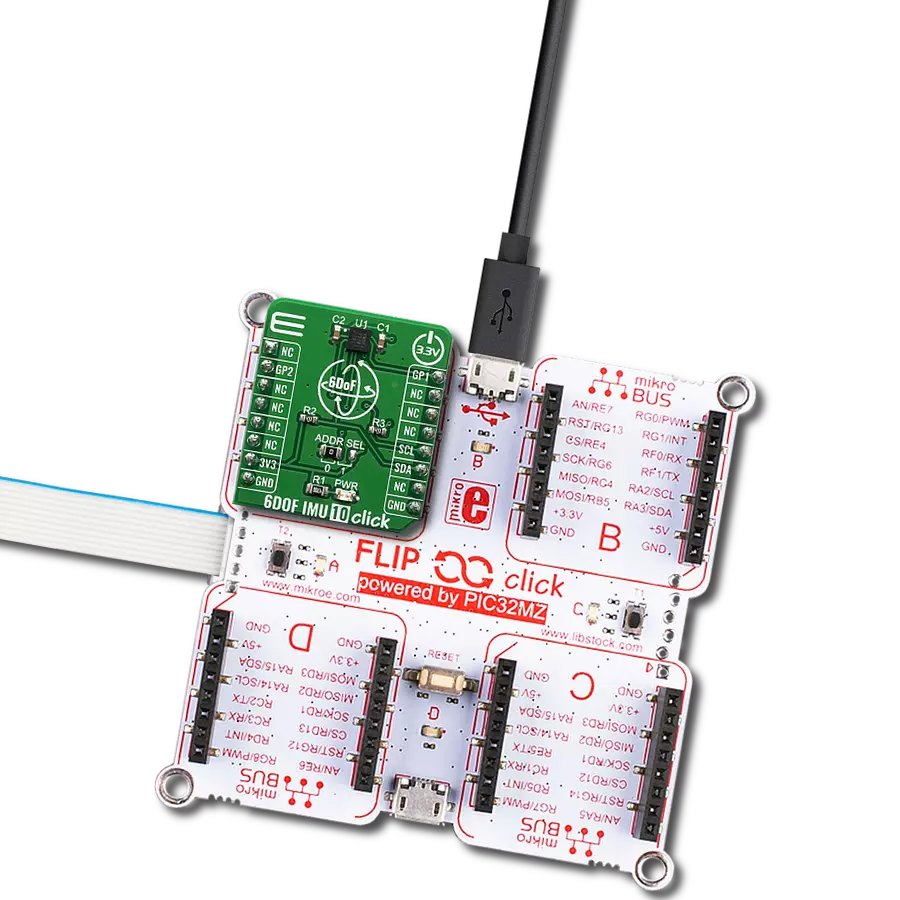Detect the straight-line movement of a magnet or determine the rotational position of a rotary application
A
A
Hardware Overview
How does it work?
LIN Hall 2 Click is based on the TMAG5253, a low-power linear Hall-effect sensor from Texas Instruments. This device uses a ratiometric architecture to eliminate errors from VCC tolerance, as the external analog-to-digital converter (ADC) uses the same VCC for its reference. Additionally, the device features magnet temperature compensation for NdFeB and Ferrite to counteract the magnetic sensitivity drifts across a wide temperature range. It fully integrates the signal
conditioning, temperature compensation circuits, mechanical stress cancellation, and output driver. The TMAG5253 is sensitive to the magnetic field component perpendicular to the sensor's top side. It also has a bipolar sensitivity where the north and south magnetic poles produce unique output voltages. LIN Hall 2 Click uses an analog-to-digital converter (ADC) of the host MCU to read the analog values of the TMAG5253. The enable EN pin allows you to put the device in an ultra-low
power (nA) mode when needed. This Click board™ can be operated only with a 3.3V logic voltage level. The board must perform appropriate logic voltage level conversion before using MCUs with different logic levels. Also, it comes equipped with a library containing functions and an example code that can be used as a reference for further development.
Features overview
Development board
Fusion for TIVA v8 is a development board specially designed for the needs of rapid development of embedded applications. It supports a wide range of microcontrollers, such as different 32-bit ARM® Cortex®-M based MCUs from Texas Instruments, regardless of their number of pins, and a broad set of unique functions, such as the first-ever embedded debugger/programmer over a WiFi network. The development board is well organized and designed so that the end-user has all the necessary elements, such as switches, buttons, indicators, connectors, and others, in one place. Thanks to innovative manufacturing technology, Fusion for TIVA v8 provides a fluid and immersive working experience, allowing access
anywhere and under any circumstances at any time. Each part of the Fusion for TIVA v8 development board contains the components necessary for the most efficient operation of the same board. An advanced integrated CODEGRIP programmer/debugger module offers many valuable programming/debugging options, including support for JTAG, SWD, and SWO Trace (Single Wire Output)), and seamless integration with the Mikroe software environment. Besides, it also includes a clean and regulated power supply module for the development board. It can use a wide range of external power sources, including a battery, an external 12V power supply, and a power source via the USB Type-C (USB-C) connector.
Communication options such as USB-UART, USB HOST/DEVICE, CAN (on the MCU card, if supported), and Ethernet is also included. In addition, it also has the well-established mikroBUS™ standard, a standardized socket for the MCU card (SiBRAIN standard), and two display options for the TFT board line of products and character-based LCD. Fusion for TIVA v8 is an integral part of the Mikroe ecosystem for rapid development. Natively supported by Mikroe software tools, it covers many aspects of prototyping and development thanks to a considerable number of different Click boards™ (over a thousand boards), the number of which is growing every day.
Microcontroller Overview
MCU Card / MCU
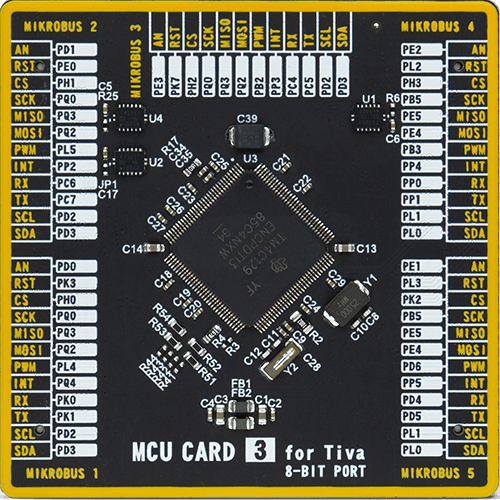
Type
8th Generation
Architecture
ARM Cortex-M4
MCU Memory (KB)
1024
Silicon Vendor
Texas Instruments
Pin count
128
RAM (Bytes)
262144
Used MCU Pins
mikroBUS™ mapper
Take a closer look
Click board™ Schematic

Step by step
Project assembly
Software Support
Library Description
This library contains API for LIN Hall 2 Click driver.
Key functions:
linhall2_read_an_pin_voltage- LIN Hall 2 read AN pin voltage level function.linhal2_set_en_pin- LIN Hall 2 set EN pin state function.linhal2_get_flux_density- LIN Hall 2 read flux density function.
Open Source
Code example
The complete application code and a ready-to-use project are available through the NECTO Studio Package Manager for direct installation in the NECTO Studio. The application code can also be found on the MIKROE GitHub account.
/*!
* @file main.c
* @brief LIN Hall 2 Click Example.
*
* # Description
* This is an example which demonstrates the use of LIN Hall 2 Click board by measuring
* magnetic field density and showing it in mT as well as detecting the orientation of the magnet.
*
* The demo application is composed of two sections :
*
* ## Application Init
* The initialization of ADC module and log UART.
*
* ## Application Task
* The demo application reads the Magnetic field density and showing it in mT
* as well as the orientation of the magnet.
*
* @author Stefan Ilic
*
*/
#include "board.h"
#include "log.h"
#include "linhall2.h"
static linhall2_t linhall2; /**< LIN Hall 2 Click driver object. */
static log_t logger; /**< Logger object. */
void application_init ( void )
{
log_cfg_t log_cfg; /**< Logger config object. */
linhall2_cfg_t linhall2_cfg; /**< Click config object. */
/**
* Logger initialization.
* Default baud rate: 115200
* Default log level: LOG_LEVEL_DEBUG
* @note If USB_UART_RX and USB_UART_TX
* are defined as HAL_PIN_NC, you will
* need to define them manually for log to work.
* See @b LOG_MAP_USB_UART macro definition for detailed explanation.
*/
LOG_MAP_USB_UART( log_cfg );
log_init( &logger, &log_cfg );
log_info( &logger, " Application Init " );
// Click initialization.
linhall2_cfg_setup( &linhall2_cfg );
LINHALL2_MAP_MIKROBUS( linhall2_cfg, MIKROBUS_1 );
if ( ADC_ERROR == linhall2_init( &linhall2, &linhall2_cfg ) )
{
log_error( &logger, " Communication init." );
for ( ; ; );
}
linhal2_set_en_pin( &linhall2, LINHALL2_ENABLE_DEVICE );
log_info( &logger, " Application Task " );
}
void application_task ( void )
{
float mag_flux = 0;
if ( LINHALL2_OK == linhal2_get_flux_density ( &linhall2, &mag_flux ) )
{
log_printf( &logger, " Magnetic flux density: %.3f[mT]\r\n", mag_flux );
if ( 0 < mag_flux )
{
log_printf( &logger, " Magnetic field oriented South \r\n\n" );
}
else
{
log_printf( &logger, " Magnetic field oriented North \r\n\n" );
}
Delay_ms ( 1000 );
}
}
int main ( void )
{
/* Do not remove this line or clock might not be set correctly. */
#ifdef PREINIT_SUPPORTED
preinit();
#endif
application_init( );
for ( ; ; )
{
application_task( );
}
return 0;
}
// ------------------------------------------------------------------------ END
